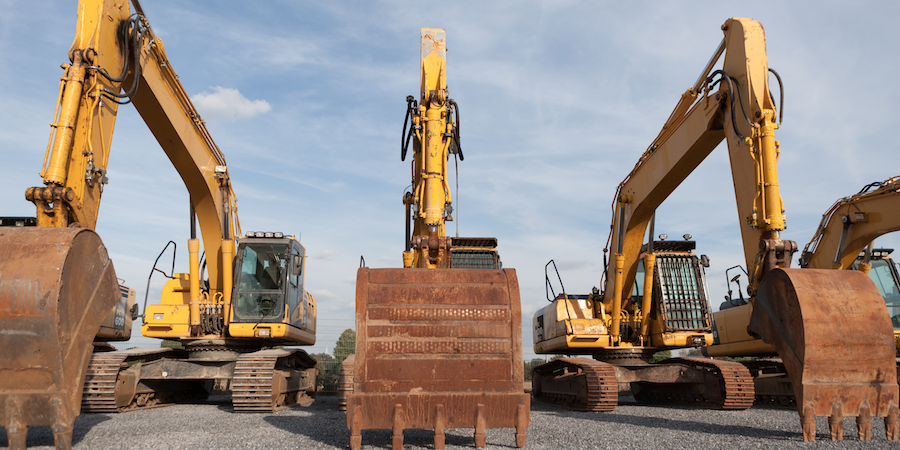With the Gulf Coast area petrochemical industry needing more than 50,000 new workers within the decade, nine community colleges have set out to find and train this “next generation” of skilled workers, enabled by a grant from the ExxonMobil Foundation.Now in its third year, the Community College Petrochemical Initiative has spread the word across the region that average salaries in this expanding industry average $99,700. It’s not surprising that enrollments in training programs, such as those at San Jacinto College, are growing significantly.In August, representatives from all nine partnering community colleges in the Texas Gulf Coast region, along with ExxonMobil, met in the Nolan Ryan Center on the Alvin Community College campus to present more than $60,000 in scholarships to 43 selected students.San Jacinto College process technology students Gladys Jackson, Laura Plazibat, and Austen Riche; along with instrumentation student Jonathan Gallo, were all at the recent event where they each received $1,000 or $2,000 scholarships.
Reshaping the Construction Industry
Our construction industry has always needed legal access to immigrants, never more so than today. We all need to rally behind the efforts to obtain some legal status for those here now and those we need to bring tomorrow. Immigrants make outstanding citizens, in most cases, and build organizations that prosper, continuously create jobs and make our industry stand very tall.
November 27, 2015
The mission at Construction Citizen is straightforward but it is not simple at all: “the advancement of a socially responsible, sustainable and value added construction industry” cannot happen without our industry sponsors, community organizations, and others working diligently on a daily basis.The Construction Citizen team has made great strides in recent years by bringing to light the scourge of worker misclassification, putting in focus the workforce challenges of the Gulf Coast, championing solutions like the Construction Career Collaborative, and featuring the great work of community colleges and service organizations like Community Family Centers and Neighborhood Centers.Our sponsors make all this possible and we cannot thank them enough.
November 25, 2015
My name is Alejandro Velez, and I have 10 years in retail work experience and roughly five months of industrial construction experience. I have an associate’s degree in sociology and will have an Associates of Applied Science degree in Instrumentation Technology in December of 2015.While working retail, I saw that I wasn’t getting paid what I was worth. After the ninth year, I made a decision to change my future, for myself and my family. Slowly, I did some research on various industrial careers. I wasn’t too sure what I wanted to pursue since all I was familiar with was retail. After a few months, I made the decision to go back to school for an Instrumentation Technology degree.
November 24, 2015
Think about Rains' Rules the next time that one of your new hire millennials wants to know what he or she can do to make a difference in their career and your business. Tell them about Rains' Rules of Marketing and tell them to “See the people.”
November 23, 2015
More states add construction jobs in October; construction price and cost PPIs divergeEditor’s note: Construction Citizen is proud to partner with AGC America to bring you AGC Chief Economist Ken Simonson's Data DIGest. Check back each week to get Ken's expert analysis of what's happening in our industry.Seasonally adjusted construction employment rose in 43 states and the District of Columbia from October 2014 to October 2015 and declined in seven states, an AGC analysis of Bureau of Labor Statistics (BLS) data released today showed. The number of places with year-over-year (y/y) gains was the most since February. California again added the most construction jobs (49,800 jobs, 7.3%), followed by New York (21,900, 6.4%) and Florida (18,700, 4.6%). Arkansas again had the steepest percentage gain (18%, 8,200 jobs), followed by Idaho (12%, 4,400), Kansas (12%, 6,900) and Nevada (11%, 7,100).
November 23, 2015
Recently, C3 Operations Manager, Maria Aimone, and I had the privilege of participating in the Associated Builders and Contractors Construction Careers Expo held at the Pasadena Fairgrounds. Given that Maria and I do not have much experience with career fairs, we were not sure what to expect. However, we were very impressed! All totaled, there were 390 high school seniors from 12 different school districts and 24 high schools who participated, and many of these young people used the opportunity to investigate the many job opportunities available to them as they graduate high school and possibly enter the construction workforce.C3 passed out information regarding the wage scales of various craft trades in the construction industry compared to other jobs in different professions. We also distributed documentation that described the cost of a college education in Texas versus the income-earning opportunity available to an individual entering the construction craft workforce today.
November 20, 2015
A Pennsylvania owner of a drywall and acoustical ceilings company faces a possible 21 years in prison for misclassification violations and perjury, if convicted.
November 19, 2015
How many times have you heard or used the phrases, “We are too high” or “We can’t get low,” as an excuse for losing a bid or a presentation? I have heard it (and used it a time or two) over my career and it has been a long career. I recently heard it again in a focus group that I was leading and got flashbacks that I thought I might share with you.First, I would make the case that you do not want to be the low bidder on any project in the design-bid-build process. My favorite saying from one of my clients is that, “The low bidder is most likely the one who screwed up and overlooked something in their bid process that will cost them and their clients dearly when construction gets underway.” Then there is one from a mentor of mine who said, ”The high bid is either a 'courtesy bid' or someone who thinks we are idiots.” This was usually followed by, “Throw out the high and the low bids and then do a spread sheet for me to evaluate.”Five decades later, the same conversation is still held daily across the AEC industry whether the project is residential, institutional, commercial or industrial and whether you are owner, architect, general contractor, sub or tenant.
November 18, 2015



.jpeg?itok=6uFZXEBH)





.jpeg?itok=4Vi_1nJG)

































